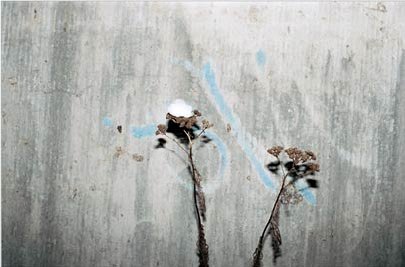Juergen Teller
dal 12/1/2006 al 10/2/2006
Segnalato da
12/1/2006
Juergen Teller
Lehmann Maupin, New York
The German photographer presents a major new body of work. The exhibition is an emotional panorama that draws on personal history, both new and old. It is a celebration of family and an investigation of the past, in private and public terms, as represented by the city of Nuremberg. Portraits of vulnerability and introspection complement the images of the weeds at the Reich Party Rally grounds to make a moving proposition of cyclical renewal, hope and openness.

Nuremberg
For his third exhibition at Lehmann Maupin Gallery, German photographer Juergen Teller presents a major new body of work entitled Nurnberg. The exhibition is an emotional panorama that draws on personal history, both new and old. It is a celebration of family and an investigation of the past, in private and public terms, as represented by the city of Nuremberg.
In the centre of Nuremberg, home of the National Socialist Party in the 1940s and the site of subsequent war trials, there is a partially completed group of Nazi monuments: a coliseum, a parade ground and a huge stadium. Designed by Albert Speer and personally commissioned by Adolf Hitler, the completed Zeppelintribune at the Reich Party Rally grounds is well documented as the site of Nazi propaganda rallies, memorably captured on film by Leni Riefenstahl in Triumph of the Will. Today the Zeppelintribune parade ground still stands, remarkable in its architecture and the failure of its ideal. It has not been turned into a historical study centre as the neighboring coliseum has, nor has it been destroyed to make way for physical and emotional regeneration. Instead it has been ignored and allowed to begin a gentle process of decay, used casually by local people for walking their dogs, rollerblading and the occasional sport event or rock concert.
Over the past year, for four clear seasons, Juergen Teller returned to Nuremberg to photograph this site so familiar from his childhood and the childhood of his mother. In recording the advancing decay Teller also confronted the complicated residue of German history so present in the melancholy of his generation. The transformation of this brutal place from hard fascism into romantic ruin is captured by the weeds that struggle through the huge regular blocks of stone and ranks of steps to soften the geometry and offer a metaphorical interpretation of reinvention. The weeds are captured in spring, summer, autumn and winter, in rain, snow and bright sunshine. Their delicate beauty and determined presence neutralises the harsh history of the site and proposes a future redemption.
Parallel to these still life images and also shot over the same four seasons, Teller photographed his growing family, himself and the surroundings of his family home in the woods of Bubenreuth. There are portraits of his children, his baby son in the bath echoing the upturned faces of the summer flowers at the Reich Party Rally grounds, and of a teenage girl unknowingly hopeful and exotic amongst the cheap prizes of a rifle range at the local Bier fest. Portraits of vulnerability and introspection complement the images of the weeds at the Reich Party Rally grounds to make a moving proposition of cyclical renewal, hope and openness.
The exhibition coincides with a new fully illustrated color book, Nurnberg, published by Steidl. Juergen Teller has a solo exhibition at the Fondation Cartier pour l'art contemporain in Paris in 2006, and participates in Click Double Click at the Haus der Kunst, Munich and in Dark at the Museum Boijmans van Beuningen the same year. Teller lives and works in London.
Lehmann Maupin Gallery
540 West 26 Street New York



